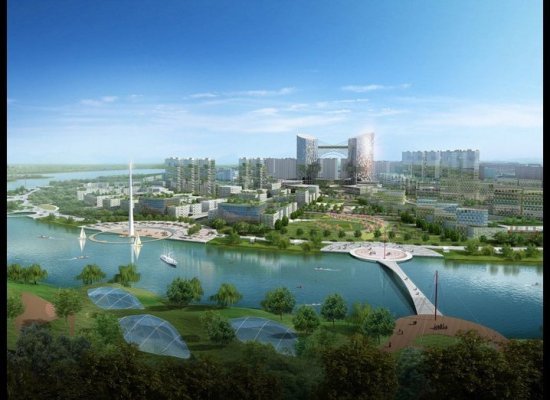Tianjin Eco-City a Blueprint for China’s Future Urbanization Efforts
Residents and companies have started moving in to Tianjin Eco-city, a joint Chinese-Singaporean project located close to Beijing. At full build-out in 2020, the project is expected to house 350,000 residents.
 By Adriana Pop, Associate Editor
By Adriana Pop, Associate Editor
Companies and residents have started moving into the Sino-Singapore Tianjin Eco-city, a joint Chinese-Singaporean project located 150 km south-east of Beijing. Currently in the fourth year of development following its groundbreaking in 2008, the new city aims to become a model for more sustainable development in China. At full build-out in 2020, the Tianjin Eco-city is expected to house 350,000 residents.
The project has been envisioned as environmentally-friendly, resource-efficient and replicable, demonstrating the determination of both countries to address the region’s environmental concerns and energy conservation issues. Nonetheless, project leaders have taken a gradual cost-efficient approach to the green ways of living they are promoting. They attempt to avoid the situation of a showcase scheme that is not viable as a result of its high costs and lifestyle restrictions.
Buildings have been designed to reduce water and energy consumption, while neighborhoods will have shops, schools, gyms and hospitals in short walking distance. Residents will be encouraged to use an advanced light rail system, in an attempt to reduce the city’s carbon emissions.
Developers from the Philippines, Taiwan, South Korea, Japan, Malaysia, Hong Kong and Singapore are creating residential developments. Approximately 20 percent of these homes are designated as public housing. The National reports that apartments in the city typically sell for approximately $1600 per square meter, while the public housing rate is about $1100.
The project is being developed on a formerly polluted wetland that has been cleaned with the help of patented technology. It includes various eco-landscapes and covers 30 square kilometers, the equivalent to about half the size of Manhattan. Sino-Singapore Tianjin Eco-City Investment and Development Co. is in overall charge of the project.
Designed by Surbana Urban Planning Group, the Tianjin Eco-city will make use of the latest sustainable technologies: solar power, wind power, rainwater recycling, and wastewater treatment/desalination of sea water. Officials hope that 20 percent of the energy used will eventually come from renewable sources, a reasonable target for a Chinese city considering the technology.
China is urbanizing at an unprecedented pace and has become the world’s largest consumer of energy. For instance, according to a 2010 World Bank report, Shanghai’s annual carbon emissions are 11.7 tones, exceeding New York’s 10.5 tones or Singapore’s 7.9 tones.







You must be logged in to post a comment.